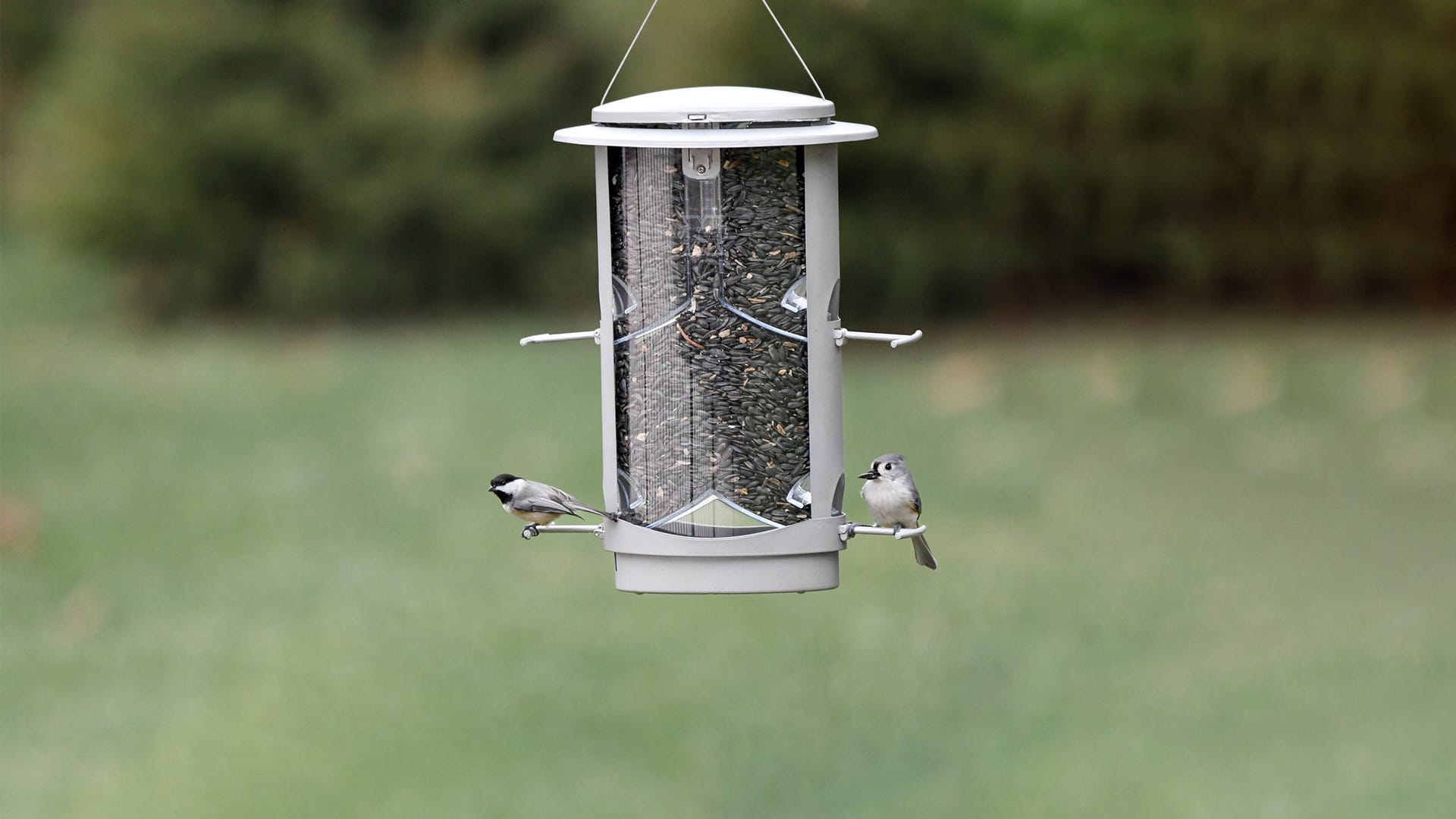
Bird feeders often bring a wide variety of birds to your backyard, and some may carry germs that could potentially make other birds sick. Diseases such as salmonellosis, avian pox, and mycoplasmosis can all be transmitted from the multiple birds visiting your feeders. However, while these diseases sound scary, they can easily be prevented by regularly cleaning your feeders.
Wash Your Feeder Often
In order to keep your feeders clean, you should wash them at least once a month to prevent the buildup of bacteria. However, if you have species of birds that migrate to your area, you should clean your feeder more frequently during any period of heavy use or if there have been reports of disease nearby.
If your feeder is empty, that means it’s been active! Instead of simply refilling it, take this time to give it some attention.
Scrape Away Leftover Seeds and Debris
Before washing, scrape out any excess debris and seeds and throw them in the trash. If any debris seems stuck
in
inaccessible places in your feeder, use a screwdriver or wrench to disassemble the parts and clean out the
rotting
seeds—be careful to only do this when it is absolutely necessary, as some feeders can be complex and tricky to
reassemble. Leftover seeds should not be reused, as they may carry harmful microorganisms. Do not put
them back in or leave any behind. Make sure everything is as clean as when you first received your feeder.
Scrub and Soak
When washing your feeders, you should use a utility tub or bucket filled with hot water to disinfect; avoid washing in your sink. Dish soap isn’t necessary, but if you are finding that you have seeds or debris that are particularly hard to remove, feel free to use soap to help get everything—just make sure to thoroughly clean your feeder with water afterward to get all of the soap off.
Next, use a solution of nine parts water to one part bleach and scrub your feeder with a brush, letting it soak for 10 minutes after. If you’d rather not use bleach, try a solution of one part water to one part white vinegar. However, vinegar solutions should be avoided if your feeder is powder coated or made with plated metal, as the solution could ruin the finish. Afterward, rinse your feeder with water and let it air dry.
Cleaning Your Hummingbird Feeder
In the case of hummingbird feeders, you should change the nectar at least every three to five days and clean the feeder once a week or more. To clean your feeder, use hot water and a bottle brush but avoid all soaps and detergents. You can also use the same nine parts water to one part bleach solution shown above. However, please ensure that you thoroughly clean all of the bleach residue off of the feeder.







